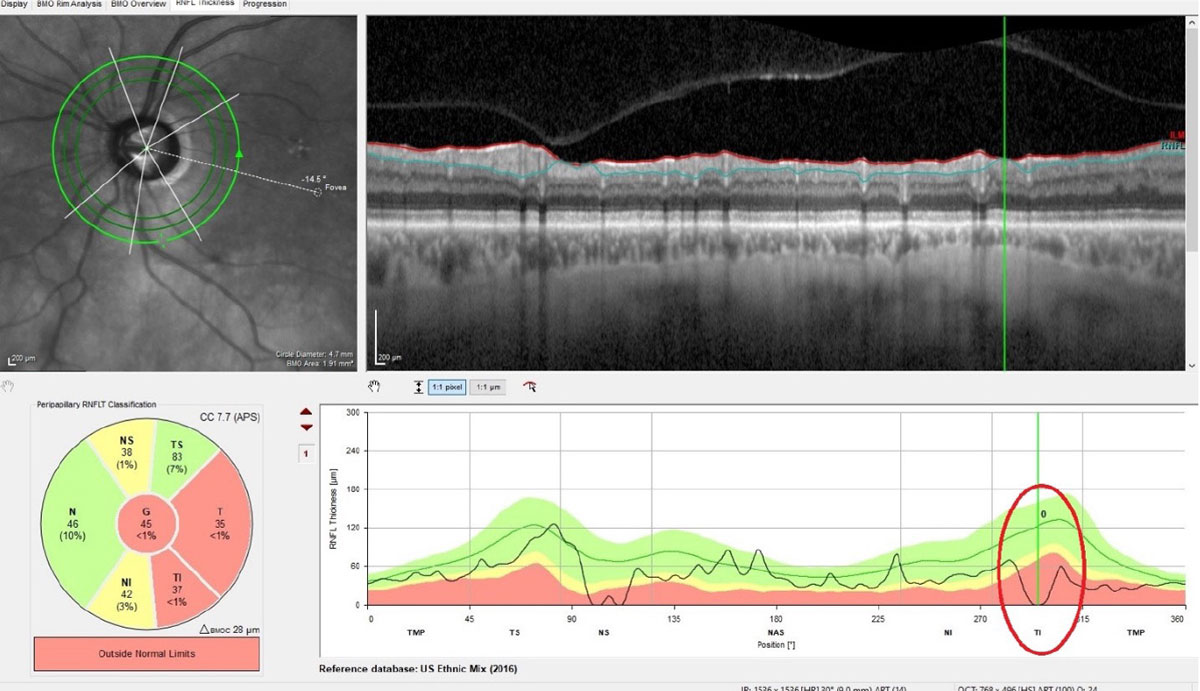 |
| Efforts to stabilize IOP—rather than just lower it—may mitigate RNFL thinning, researchers argue. Image courtesy of James Fanelli, OD. Click image to enlarge. |
Researchers recently found that in eyes treated for primary angle-closure disease (PACD), large IOP fluctuation is an independent predictor for subsequent progressive RNFL thinning and high mean IOP during follow-up.
This prospective cohort study evaluated 517 PACD eyes of 280 Chinese subjects who were followed for at least 24 months. IOP was measured every three months using Goldmann applanation tonometry, and RNFL thickness was measured with SD-OCT every six months. The relationship between IOP and subsequent RNFL changes over time was examined using multivariable linear mixed regression models. Intra-class correlations at the patient and eye levels were also controlled using nested random intercepts in the models.
IOP mean (β; regression coefficient=-1.20μm/year per 1mm Hg) and IOP fluctuation (β=-3.10μm/year per 10%-unit change in the coefficient of variation) were independently negatively associated with subsequent progressive global RNFL changes, even after adjusting for age, sex and baseline RNFL thickness.
In the sectoral analysis, both higher mean IOP and IOP fluctuation predicted progressive RNFL thinning in the inferotemporal, superotemporal, superonasal and temporal sectors, in order of strength of association. In the subgroup analysis by disease category, IOP fluctuation showed greater association with global RNFL thinning in eyes with PACG than eyes without glaucomatous changes.
“Our findings confirm the role of long-term IOP fluctuation in glaucoma progression and highlight the significant and independent roles of high mean IOP and IOP fluctuation in accelerating progressive RNFL loss among patients with PACD,” the study authors concluded. “We propose that aside from lowering mean IOP, reducing IOP fluctuation may be considered as a treatment strategy to preserve retinal ganglion cell axons in PACD eyes.”
Cheung CY, Li SL, Chan N, et al. Intraocular pressure control predicts retinal nerve fiber layer thinning in primary angle closure disease: the CUPAL study. Am J Ophthalmol. August 17, 2021. [Epub ahead of print]. |

